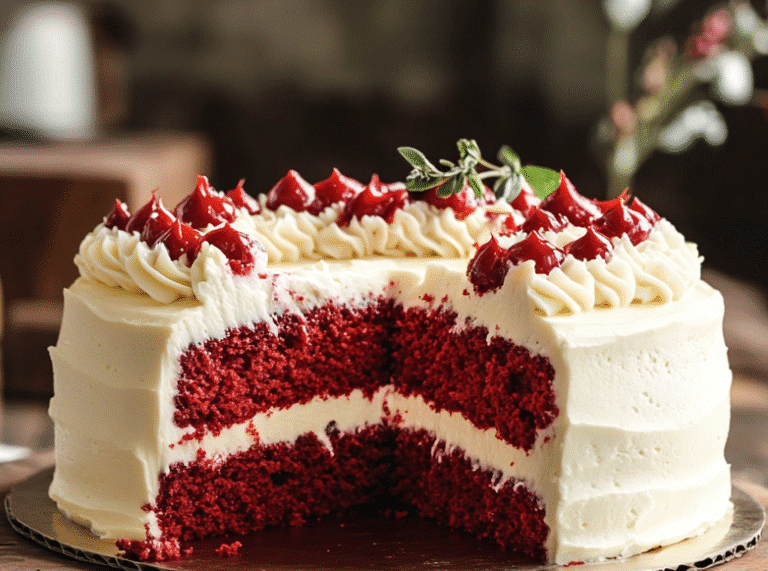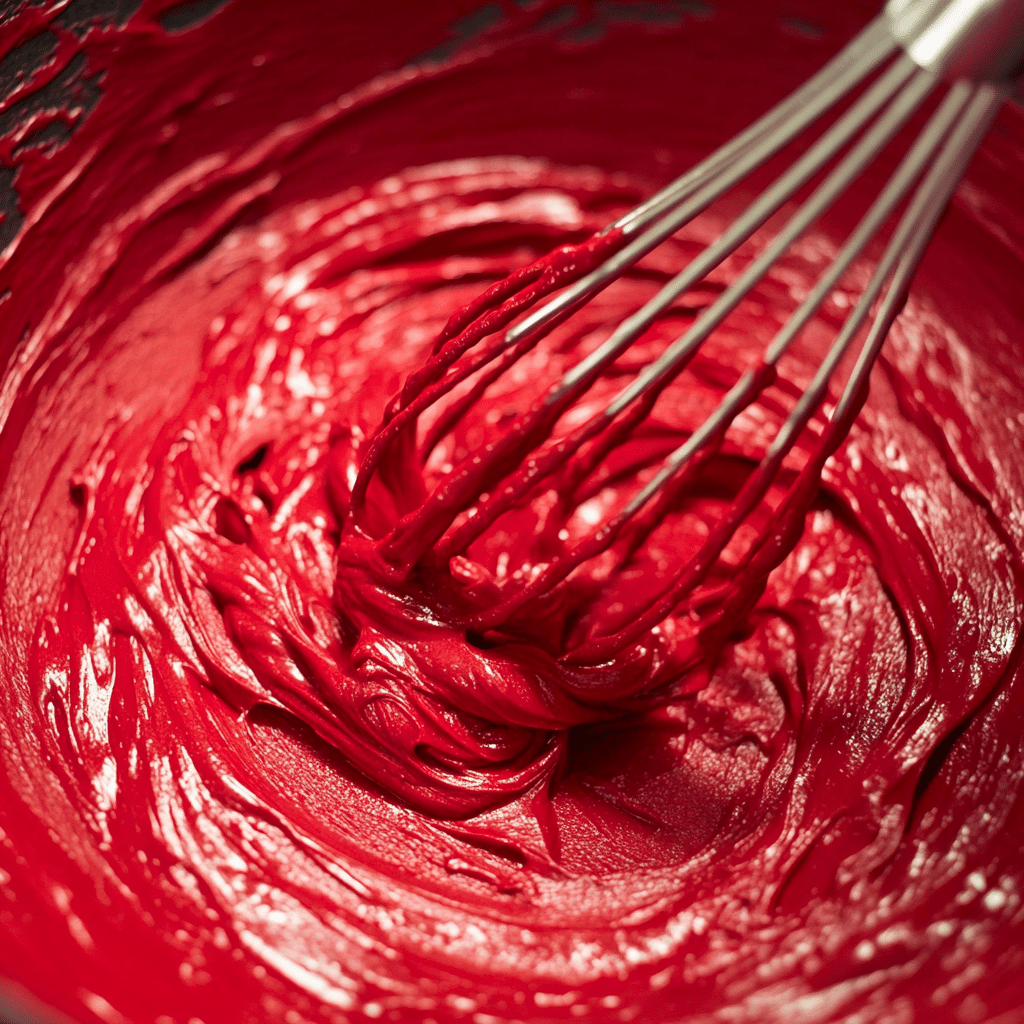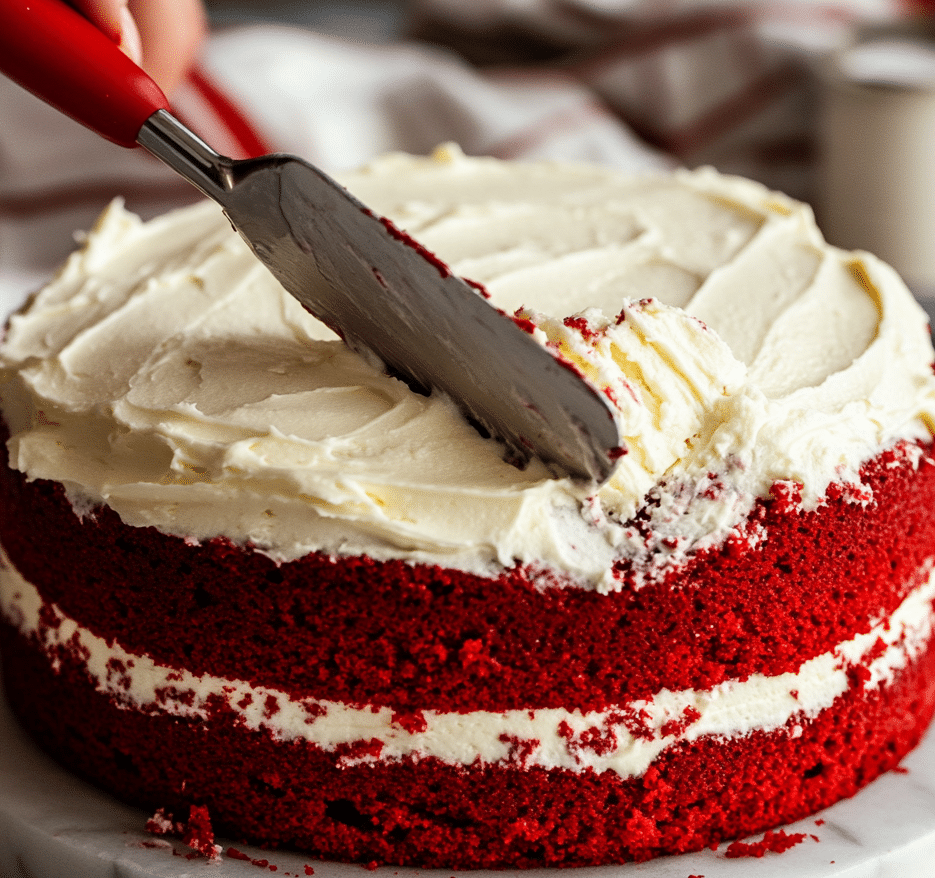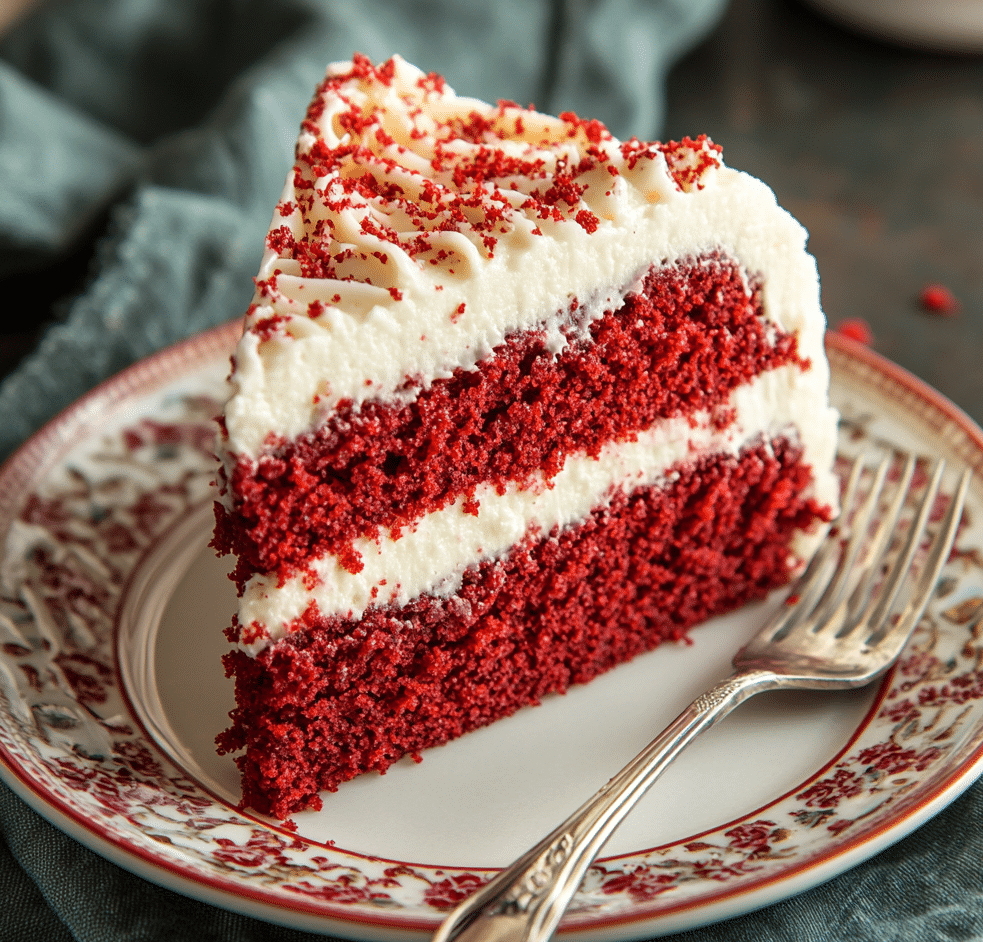I’m Thomas, a chef shaped by stories and tastes and nothing tells a story like red velvet cake mix. In this article, we’ll dive into choosing the best mix, sprucing it up with clever hacks, understanding what it’s made of, and uncovering the secret ingredient that gives it its iconic color. Whether you’re baking for beginners or seasoned bakers, these insights will help you bake with curiosity, heart, and confidence. Let’s get started with Part 1, all about picking your perfect box.
Choosing the Best Red Velvet Cake Mix
Why Mix Choice Matters
If you’re like me, red velvet cake isn’t just a dessert—it’s a celebration on a plate. But let’s be real: not all red velvet cake mixes deliver the same experience. Some bake up dry or overly sweet, while others hit that perfect balance of cocoa depth, buttery richness, and signature red flair. Choosing the right mix sets the tone for everything that follows texture, taste, and even how well it holds up to frosting. It’s the foundation, and it matters.
Taste-Test Insights
Over the years, I’ve tested countless red velvet cake mixes in professional kitchens and at home. The standout ones? They bake evenly, rise without crumbling, and hit that just-right note of subtle cocoa flavor with a rich, moist crumb. My personal go-to is one that stays moist for days and doesn’t taste overly processed. The ideal mix has a vibrant red color that doesn’t stain your fingers or your soul, a soft mouthfeel, and just enough tang to let you know it’s red velvet—not dyed chocolate cake.
When testing, I look for a cake that can hold up under a generous layer of cream cheese frosting without collapsing. Bonus points if it smells amazing right out of the oven. If you’re using a mix for a celebration, it should feel and taste like one no shortcuts in flavor, even if you started with a box.
Print
Red Velvet Cake Mix: Ultimate Guide to Baking Better Box Cakes
A moist, vibrant red velvet cake with cream cheese frosting—elevated from a box mix into a bakery-style dessert.
- Total Time: 50 mins
- Yield: 12 servings 1x
Ingredients
1 box red velvet cake mix
1 cup buttermilk
1/2 cup sour cream (or Greek yogurt)
2 large eggs
4 tbsp melted butter
1 tbsp cocoa powder
1 tsp vanilla extract
1 tsp vinegar
Instructions
1. Preheat oven to 350°F (175°C). Grease and flour a 9-inch round pan.
2. In a bowl, whisk together cake mix, buttermilk, sour cream, eggs, melted butter, cocoa, vanilla, and vinegar until smooth.
3. Pour batter into pan and bake 30-35 minutes, or until a toothpick comes out clean.
4. Let cake cool in pan 10 minutes, then transfer to a wire rack.
5. Frost with cream cheese frosting once fully cooled.
Notes
Use sour cream or Greek yogurt for added moisture.
Substitute beet juice for food coloring for a natural hue.
Chill frosted cake briefly for cleaner slicing.
- Prep Time: 15 mins
- Cook Time: 35 mins
- Category: Dessert
- Method: Baking
- Cuisine: American
- Diet: Vegetarian
Nutrition
- Serving Size: 1 slice
- Calories: 320
- Sugar: 28g
- Sodium: 230mg
- Fat: 18g
- Saturated Fat: 10g
- Unsaturated Fat: 6g
- Trans Fat: 0g
- Carbohydrates: 40g
- Fiber: 1g
- Protein: 4g
- Cholesterol: 65mg
How to Improve Box Red Velvet Cake Mix

Doctoring Your Box Mix
Even the most reliable red velvet cake mix can become something extraordinary with a few chef-tested upgrades. Over the years whether baking in a restaurant kitchen or my Asheville home I’ve developed a few non-negotiables.
First: swap the water for buttermilk. It adds fat, richness, and acidity that box mixes lack. Then replace one egg with a generous spoonful of Greek yogurt or sour cream. The result? A moist, almost custard-like crumb that’s anything but store-bought. Melted butter four tablespoons is my secret weapon. It brings warmth, flavor depth, and a luscious mouthfeel.
Want next-level results? Stir in a small packet of instant pudding (vanilla or white chocolate). It enhances structure while giving that bakery-slick texture. It’s a subtle shift, but your guests will notice. And finally, don’t forget a teaspoon of high-quality vanilla extract. It rounds out the edges and gives that nostalgic, from-scratch taste.
Texture and Flavor Hacks
Beyond richness, let’s talk complexity. Red velvet should carry a whisper of cocoa. Amp it up with a tablespoon of unsweetened natural cocoa powder don’t overdo it or it’ll taste like chocolate cake. A dash of espresso powder, dissolved in warm milk, deepens the flavor without adding bitterness.
To heighten the signature tang, blend in a teaspoon of vinegar white or apple cider just before baking. It reacts with baking soda in the mix to add lightness and that telltale velvet bite. These aren’t just “hacks”; they’re strategic upgrades that transform the humble mix into a dessert you’ll be proud to serve at any celebration.
Need inspiration? Our baking tips archive is packed with flavor pairings, and our frosting techniques guide walks you through finishing touches that make a boxed cake look like it came from a boutique bakery.
What Is Red Velvet a Mix Of?

Essential Ingredients
Red velvet isn’t just a flavor it’s a texture, a memory, and a balance of contradictions. At its core, the best red velvet cake mix builds upon a time-tested combination: flour, sugar, cocoa powder, baking soda, buttermilk, eggs, oil or butter, vinegar, and food coloring. Each element brings something specific, and none is there by accident.
Flour and eggs give the cake its structure light enough to feel tender, but strong enough to hold its shape when sliced. Fats like oil or butter provide moisture and richness. The sugar balances acidity and highlights the cake’s mellow sweetness. Then you have cocoa powder less than you’d use in a chocolate cake just enough to lend a whisper of earthiness. Think of it not as the lead flavor but as a grounding note, like a bassline in a jazz ensemble.
But what makes red velvet unique is its acidity. Buttermilk and vinegar are essential not only for their tang but also because they interact with baking soda to create lift. That chemical reaction forms fine, even air bubbles that give the cake its velvety crumb a texture so soft, it almost melts on the tongue.
Even boxed mixes echo this structure, though some streamline the ingredients into stabilizers and pre-mixed components. Still, the goal remains: soft, rich, lightly chocolatey, and just a bit tart. That complexity is what separates red velvet from any standard chocolate or vanilla offering.
Science Behind the Blend
The origin of red velvet’s iconic hue wasn’t artificial it was chemical. Old-fashioned cocoa, rich in natural anthocyanins, reacted with the acidic buttermilk and vinegar to produce a reddish-brown tint. This chemical dance was subtle and earthy, a hint of color that told you something special was happening in the batter. No flashy food coloring—just science at work.
In the American South during the early 20th century, some bakers took it a step further, adding grated beetroot or beet juice for a deeper color and extra moisture. This wasn’t just aesthetic—it made the cake more tender and added a whisper of natural sweetness.
But as food production industrialized, companies started using synthetic dyes most notably Red 40—to standardize the bold red hue. This transformation made red velvet cakes more visually dramatic, but the heart of the recipe the balance of acid, fat, and flavor remained unchanged.
Understanding this scientific foundation lets you make more informed adjustments. Want more rise? Boost the acid. Want to dial up cocoa richness? Use Dutch-processed cocoa, but add more vinegar to compensate for lower acidity. It’s chemistry on a plate—and when done right, it’s an edible lesson in precision and balance.
You can dig deeper into this interplay of flavor and function in our ingredient science and cake chemistry guides. Once you understand why red velvet behaves the way it does, you won’t just follow recipes—you’ll master them.
What Ingredient Makes a Red Velvet Cake?
Key Color-Defining Ingredient
Red velvet’s allure is visual as much as it is flavorful. That vibrant, almost theatrical red slice says celebration, drama, and indulgence. Today’s box mixes use food coloring liquid, gel, or powdered to achieve a consistent hue. It’s quick and reliable, but not the only route.
Some bakers are returning to old-school roots, swapping out artificial dye for beet juice or even pomegranate reduction. These options bring both color and character. They add slight vegetal or fruity undertones, which can be a bonus or a challenge, depending on your goal. If you try this route, balance the acidity and keep sweetness in check.
Red coloring might not alter taste directly, but it shapes perception. A deep, velvet red instantly sets the tone and in baking, visuals matter just as much as flavor.
Flavor Signature Ingredient
Beyond color, what makes red velvet unforgettable is its balance of richness and tang. That comes from two ingredients: buttermilk and vinegar. When these two acidic components are added to the mix, they not only soften the crumb they also wake up the cocoa and balance the sweetness. It’s what separates red velvet from a dyed chocolate cake.
And don’t overlook the finishing touch: a generous smear of cream cheese frosting. The slight saltiness and lactic tang of the frosting amplify the cake’s flavor and texture. Frosting isn’t just a topping it’s the closing note in a well-composed bite.
For more ways to build that red velvet signature from the ground up, explore our curated frosting recipes and buttermilk baking techniques. These are the tools that elevate your red velvet from good to unforgettable.

for more recipes follow our facebook page
Conclusion
Red velvet cake mix can be more than a shortcut—it can be a canvas. From my grandma’s table to restaurant kitchens, red velvet has always told a story of balance: soft but bold, rich yet bright. With the right mix, a few smart additions, and an understanding of what makes it tick, you can turn a box into something worthy of celebration. Try these tips, share your twist, and keep cooking with heart.
FAQS
Which is the best red velvet cake mix?
Pillsbury Moist Supreme consistently earns top marks for its moist texture, rich cocoa notes, and vibrant red color. Betty Crocker comes in close with a tender crumb and classic flavor profile. Choose based on your preferred sweetness level and texture.
How to improve box red velvet cake mix?
Replace water with buttermilk, add an extra egg, or mix in sour cream or instant pudding. These tweaks enrich flavor and create a denser, bakery-style cake. A touch of cocoa powder and a splash of vinegar can elevate the traditional red velvet tang.
What is red velvet a mix of?
Red velvet cake combines flour, sugar, cocoa powder, buttermilk, vinegar, eggs, and red coloring. It’s a lightly flavored cocoa cake balanced by acidic ingredients that give it a soft crumb and subtle tang.
What ingredient makes a red velvet cake?
The defining ingredient is red food coloring or, for purists, beet juice. But what truly sets the cake apart is the combination of buttermilk and vinegar, which reacts with cocoa to create that signature flavor and texture.